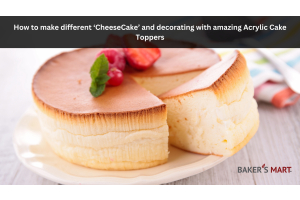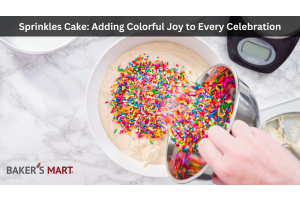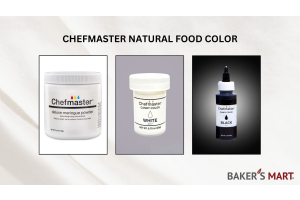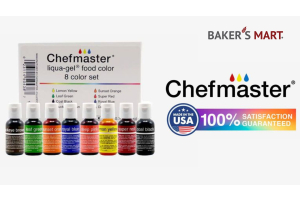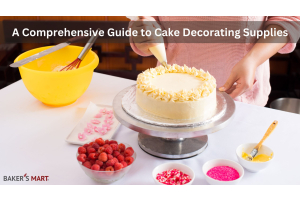Enhancing Culinary Creativity: The Magic of Vibrant Food Coloring in Baking

Baking is not just a science; it's an art that engages all the senses. From the tantalizing aroma wafting through the kitchen to the symphony of flavors dancing on your taste buds, baking is a sensory experience. One crucial aspect of this experience is the visual appeal of baked goods, and vibrant food coloring plays a significant role in bringing creations to life. In this blog, we'll explore the fascinating world of vibrant food coloring for baking, delving into its history, types, tips for usage, and the artistic possibilities it unlocks.
A Historical Palette:
Food coloring has a rich history, dating back to ancient civilizations. Early cooks used natural sources like plants, fruits, and vegetables to add hues to their dishes. However, it wasn't until the 19th century that synthetic food dyes emerged, revolutionizing the culinary world. Initially, these dyes were met with skepticism, but as their safety improved, they became essential tools for bakers and chefs alike.
Types of Vibrant Food Coloring:
Natural Food Coloring:
Natural food coloring has gained popularity in recent years, driven by a growing demand for clean and organic ingredients. Derived from plants, fruits, and vegetables, these colorings are free from synthetic additives. Common sources include beet juice (for red), turmeric (for yellow), and spirulina (for blue and green). While Chefmaster Colors may impart more subtle shades compared to their synthetic counterparts, they offer a healthier alternative.
Synthetic Food Coloring:
Synthetic food coloring, commonly found in liquid, gel, or powder form, provides a broad spectrum of vibrant and intense colors. They are widely used in the baking industry due to their stability, versatility, and the ability to produce a wide range of hues. Common synthetic food colors include Red 40, Blue 1, and Yellow 5. It's essential to follow recommended usage guidelines to ensure the safety of these additives.
Gel Food Coloring:
Chefmaster Gel food coloring has become a favorite among bakers for its concentrated formula. It imparts vivid colors without altering the consistency of the batter or icing. Gel colors are especially popular when working with fondant or delicate cake decorations, allowing for precise color control.
Powdered Food Coloring:
Powdered food coloring is a dry alternative that is versatile and easy to use. It's often favored in applications where too much liquid can impact the consistency of the recipe. Powdered colors are ideal for tinting dry ingredients such as flour or sugar and can be dissolved in wet ingredients for a more vibrant effect.
Tips for Using Vibrant Food Coloring in Baking:
Start Small:
When experimenting with food coloring, especially if you're new to it, start with a small amount and gradually add more until you achieve the desired hue. It's easier to add color than to take it away.
Color Wheel Understanding:
Familiarize yourself with the color wheel to create harmonious and visually appealing combinations. Complementary colors, for instance, can be used to enhance the vibrancy of each other.
Consistency Matters:
Different types of Chefmaster Food Coloring can affect the consistency of your batter or icing. Gel and powdered colors are often preferred for maintaining the desired texture, especially in delicate recipes.
Experiment with Layering:
For multi-colored creations, consider layering different colored batters or icings. This adds depth and visual interest to your baked goods.
Be Mindful of Heat:
Heat can alter the color of some food dyes. To maintain the vibrancy, avoid exposing brightly colored creations to excessive heat for prolonged periods. This is especially important when working with delicate decorations.
Artistic Possibilities:
Custom Creations:
Vibrant food coloring allows for the creation of custom shades, enabling bakers to match colors to specific themes, events, or personal preferences. This level of customization enhances the visual impact of baked goods.
Special Occasion Treats:
Whether it's a birthday cake, holiday cookies, or celebratory cupcakes, vibrant food coloring transforms baked goods into special occasion treats that delight both the eyes and taste buds.
Creative Decorations:
From rainbow layer cakes to ombre frosting and marbled cookies, chefmaster food coloring opens the door to a world of creative decorations. Bakers can let their imagination run wild, turning each creation into a unique masterpiece.
Conclusion:
Vibrant Food Coloring is a powerful tool that elevates the art of baking, allowing for a visually stunning and personalized culinary experience. Whether you opt for natural sources, synthetic dyes, gel, or powdered coloring, the key lies in understanding the characteristics of each and using them thoughtfully. With the right knowledge and a splash of creativity, bakers can turn their kitchens into vibrant canvases, bringing joy and excitement to those fortunate enough to savor their colorful creations. So, embrace the palette of possibilities that vibrant food coloring offers and let your baking journey become a feast for the eyes as well as the palate.


